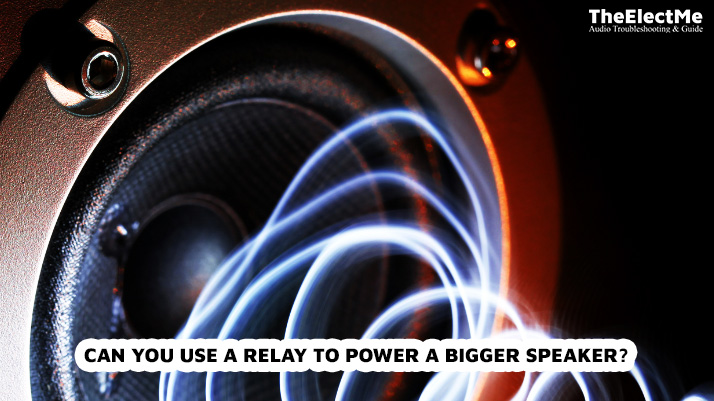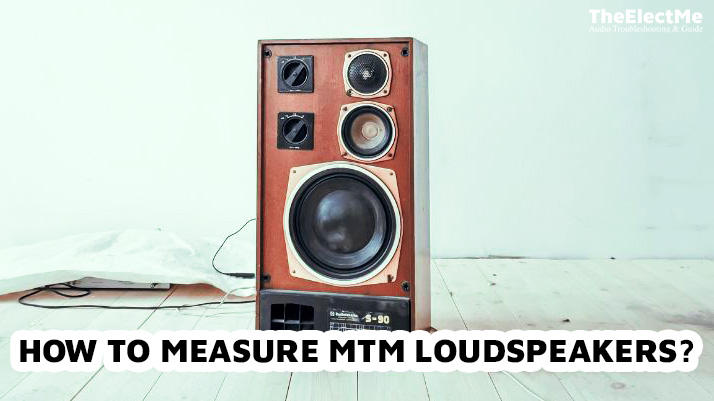Can you use a relay to power a bigger speaker? This is a question for those looking to upgrade their audio setup. In short, the answer is yes; you can use a relay to power a bigger speaker. However, there are some factors to consider before doing so.

A wrong setup can damage your equipment and compromise the quality of your audio. Before using it to power a larger speaker, you need to understand how a relay works and its capabilities. Read the article to learn more about using a relay to power and install a bigger speaker correctly. Let’s start by understanding what a relay is.
What Is A Relay And How Does It Work?
A relay is an electronic switch that allows low-power electrical signals to control high-power circuits. It consists of a coil, an armature, and contacts. The coil acts as the magnet, while the armature moves under the influence of the magnetic field when energized.
This movement opens or closes the contacts, allowing or cutting off the flow of electricity.
When powering a speaker, the relay is a buffer between the audio amplifier and the speaker. It helps to control the amplifier’s high power and voltage output.
This is crucial when using a larger speaker that requires more power to produce quality sound. A relay prevents the amplifier from sending too much current to the speaker, which can damage it.
A relay is crucial for larger speakers, requiring more power to work efficiently. Without a relay, the amplifier may be unable to handle the speaker’s power requirements. It will result in poor sound quality, and distortion, and can even cause permanent damage to the speaker or amplifier.
You deeply understand what a relay is and its importance when powering bigger speakers. Next, let’s discuss factors to consider before using a relay for larger speakers.
5 Factors To Consider Before Using A Relay For Larger Speakers
Before using a relay to power a bigger speaker, you must consider various factors to ensure safe and efficient operation. Here are five essential things to consider:
Power Rating
The power rating of a relay refers to the maximum power it can handle without getting damaged. Similarly, speakers also have a power rating that indicates how much power they require to work efficiently.
When using a relay for larger speakers, ensure its power rating exceeds the speaker’s requirements. If the relay’s power rating is too low, it may get damaged due to the speaker’s high power output. On the other hand, if it’s too high, you may unnecessarily waste energy and money.
Impedance Matching
In addition to the power rating, it’s essential to consider the impedance matching between the relay and speaker. Impedance is a measure of resistance in an electrical circuit and can affect sound quality. Ensure the relay’s impedance matches or is close to the speaker’s impedance to avoid distortion or damage.
Wiring and Installation
Proper wiring and installation are crucial for efficient operation and safety. Follow the manufacturer’s instructions carefully when connecting the relay to your audio system. Ensure all connections are secure, and the wiring is of appropriate gauge for the power requirements.
Compatibility with Your Amplifier
The relay must also be compatible with your amplifier. Check the specifications of your amplifier and ensure it is compatible with the relay you are using. If not, consider getting a different relay or amplifier to avoid potential damage.
Adequate Ventilation
Lastly, make sure the relay has adequate ventilation for heat dissipation. A relay that powers a larger speaker may generate more heat due to increased power requirements. Without proper ventilation, the relay can overheat and damage your equipment. Sometimes, poor ventilation also causes the speaker baffled. What is a speaker baffle?
Now that you know how to choose a suitable relay for powering larger speakers, let’s discuss the installation process.

How To Install A Relay For Powering Larger Speakers?
Installing a relay for powering larger speakers is relatively simple, but it requires careful attention to detail. Follow these steps to install a relay correctly:
Step 1: Gather your equipment and tools
To install a relay for powering larger speakers, you will need:
- A relay with appropriate power and impedance ratings
- Appropriate gauge wiring (refer to manufacturer’s instructions)
- Screwdriver
- Wire cutters/strippers
- Electrical tape
Ensure all tools and equipment are in good condition. A damaged or malfunctioning tool can affect installation and potentially damage your equipment.
Step 2: Determine Relay Placement
Once you have all the necessary equipment, decide where to place the relay. It should be close enough to the amplifier and speaker for easy connection. A secure location with proper ventilation is ideal.
Step 3: Connect the Power Source
You can connect the wires when the relay place has been determined and the power source is set. To connect the power source, follow these steps:
- Connect the power wire from the battery to the relay’s common terminal.
- Attach a fuse holder in-line with the power wire for safety.
Step 4: Wire the Speaker
After connecting the power source, you can wire the speaker to the relay. To do this:
- Connect one end of the speaker wires to the relay’s normally open (NO) terminal.
- Connect the other end of the speaker wires to the speaker’s positive terminal.
- Connect the negative wire from the amplifier to the speaker’s negative terminal.
Step 5: Test and Secure Connections
Before securing all connections, test the relay by turning on your audio system and playing music. It includes testing the speaker and amplifier to ensure they are working correctly.
Once everything is working correctly, secure all connections with electrical tape. Ensure they are tight and well-insulated to prevent any accidents or damage. If the connection is not tight then your speaker not working. There are multiple reasons why on wall speaker not working.
Congratulations, you have successfully installed a relay to power larger speakers.
You can connect the wires when the relay place has been determined and the power source is set.
Conclusion- Can You Use A Relay To Power A Bigger Speaker?
To summarize, yes, you can use a relay to power larger speakers. But it’s essential to consider factors that affect safe and efficient operation. A relay with a suitable power rating, impedance matching, and proper installation is crucial to prevent damage to your equipment.
Following the steps mentioned above, you can safely install a relay to power larger speakers and enjoy high-quality audio without any worries. So, take your audio system to the next level with a reliable relay for your bigger speakers.



